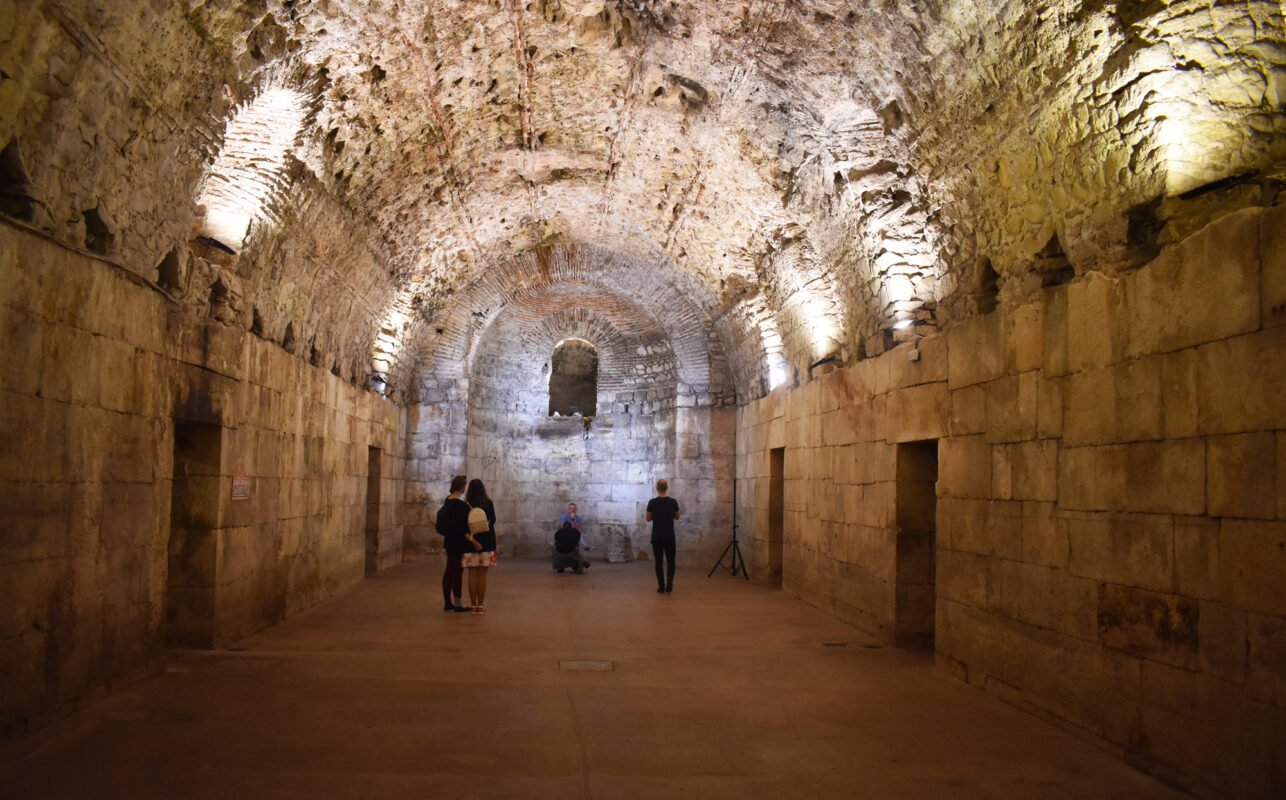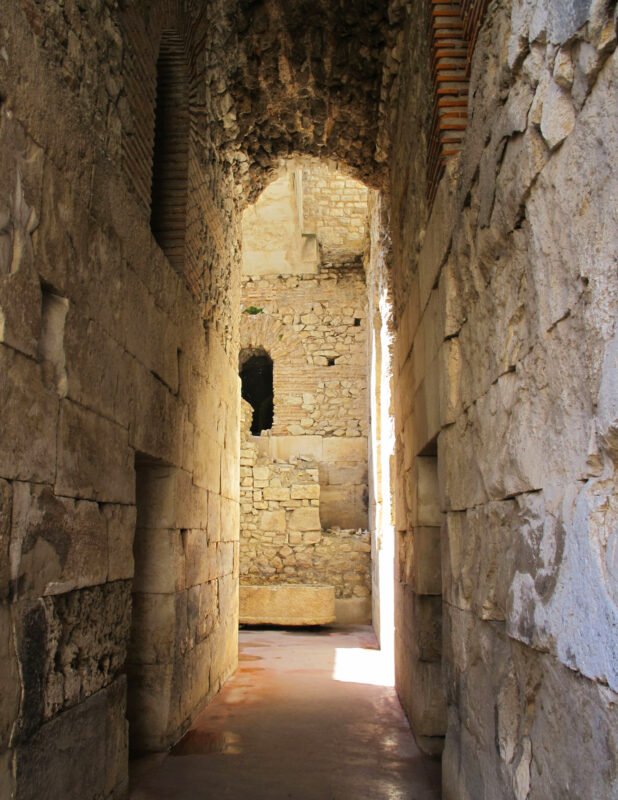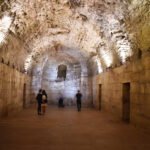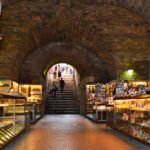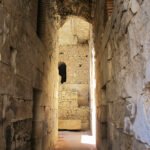Cellars of Diocletian’s Palace
The Cellars of Diocletian’s Palace, sometimes referred to as the ‘basements’ or the ‘substructions’, are the underground complex of halls and corridors located underneath the southern section of the Diocletian’s Palace which originally formed the palace proper, that is, the private residence of the emperor himself. The cellars are particularly important because their ground-plan mimics the layout of the emperor’s chambers above them, that has mostly been erased by the medieval residential buildings, thus enabling researchers to precisely reconstruct the architectural plan of Diocletian’s private quarters.
Research has shown that the northern section of the palace were built on top of a cliff, so that the purpose of the cellars must have been to elevate the southern part of the palace on the same level as the rest of the complex. Whether this was planned from begging in order to create a storage area or whether it reflects a change in the original plans has yet to be determined.
In the early medieval period, when the palace ceased being a private property of the Roman emperors, the cellars briefly became inhabited by the post-Roman population of Dalmatia flocking to the confines of its ancient walls. Later on, as the city expanded, the cellars began to be increasingly used as waste pits and septic tanks. Through the medieval period, the western section of the cellars, which was mostly enclosed on all sides, ended up being mostly filled up, while the eastern part survived in its original form until a fire at the turn of the sixteenth century ravaged the medieval quarters above it. From that point on, both sections of the cellars were filled up with rubble and largely forgotten until they were rediscovered in the middle of the nineteenth century.
The cellars were only dug up in the post-war period, when several large scale archaeological projects brought the cellars back into the light.
Today, the cellars are operated by the City Museum and are available to visitors.
